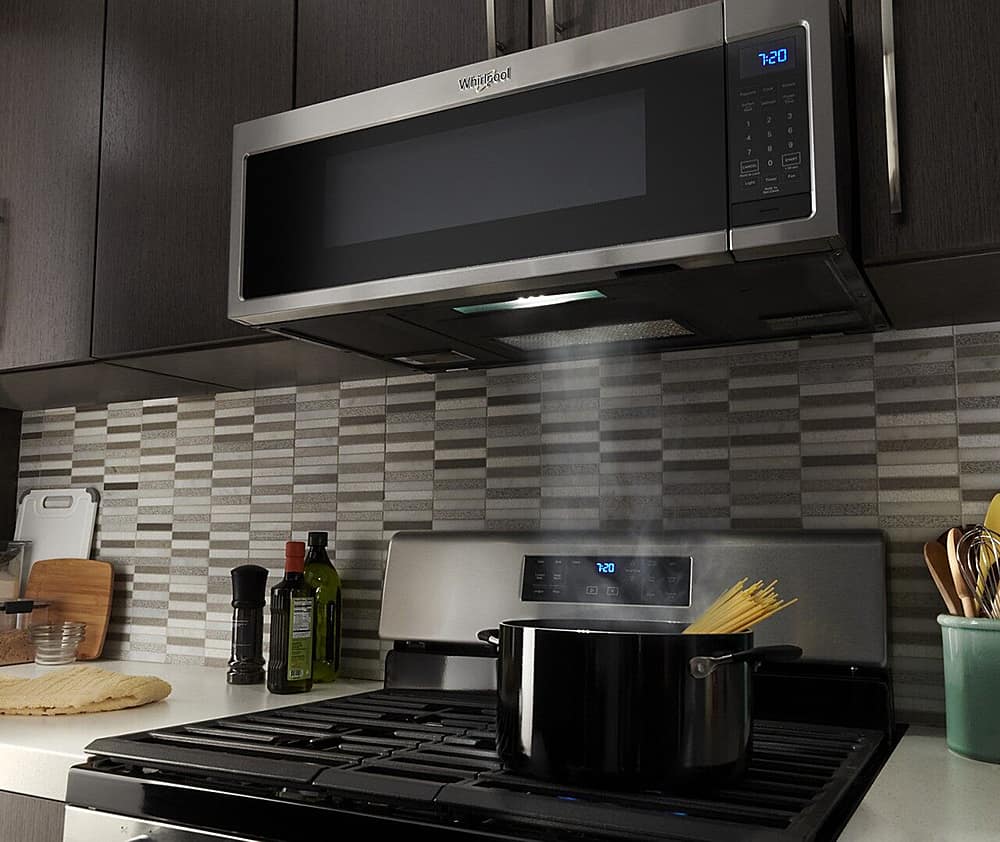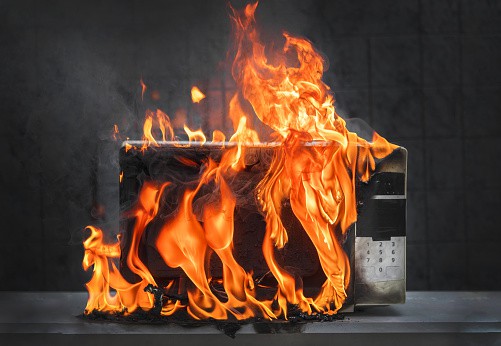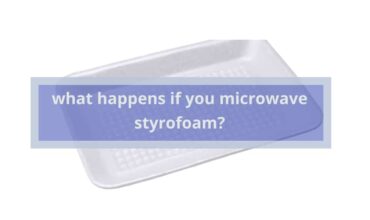Have you just added a new over the range microwave to your counter space to take your cooking experience to the next level? Congrats!
While checking the care guide, you must have come through a section talking about the automatic fan feature, and most of the users who are not familiar with the new range microwave technologies, don’t really know a lot about this feature.
That’s why I created this Question & Answer guide to help you know everything about over the range microwave venting!

All over the range microwave ovens on the market right now come with an auto vent fan feature, to protect the electronic elements and allow the kitchen to get rid of excess heat.
Now, you might be wondering, how does the automatic fan feature work? Well, the built-in thermostat turns the microwave vent fan on automatically when the kitchen appliance gets too hot. Specifically, when the temperature around the control panel reached more than 150 degrees Fahrenheit.
Once your countertop microwave oven or whatever the OTR microwave type cools down and becomes less than 150 degrees Fahrenheit., the microwave vent fan will shut off.
It is worth mentioning that during the time the vent fan is in the middle of the cooling down process, you won’t be able to turn it off manually.
Read More: https://kitchenzad.com/can-you-microwave-lobster/
What Is Microwave Vent Fan For?
Do Wall Microwaves Need to Be Vented?
An over the range OTR microwave oven does not need to have an exterior vent. These types of microwaves can be configured to blow fresh air into the kitchen or be vented outside.
What Are the Different Microwave Vent Types?
The first type is found in microwaves with vents or ducts, as they come with exhaust fans that draw air outside the building, keeping your indoor air quality clean.
The second type found in air recirculation, is ductless range hoods or updraft microwaves, as they filter kitchen air, and then push it back into the kitchen.
On the other hand, convertible microwaves allow you to choose your preferred effective ventilation type.
What Is the Difference Between a Vented and Non-Vented Microwave?
Ventilated types of kitchen vent hoods are significantly better at completely getting rid of impurities from the air in your kitchen, while the air recirculation mode in the non-vented unites, circulates the air back into the cooking space through microwave charcoal filters.
What Happens If a Microwave Doesn’t Have Enough Ventilation?

if a microwave doesn’t have enough ventilation while it is in use, it can overheat and eventually stop working.
In order for you to keep maintain proper ventilation, keep a three-inch gap between the top, sides, and back of the unit as well as the area where the unit is installed.
What’s The Best Way to Vent a Microwave?
When deciding on the optimal type of ventilation for over the range models, you need to know that there are two ventilation options. The first one is recirculating vents and the second one is ducted vents.
The vent’s main goal is to exhaust your kitchen’s interior by sucking air from the microwave, stopping hot air, moisture, culinary odors, and smoke, from staying in the kitchen.
Read More: https://kitchenzad.com/can-you-microwave-glass/
How Do I Know If My Microwave Vents Are Outside?
The microwave’s top back has a vent for an external exhaust, which vents out the roof.
If your kitchen appliance is venting back into the kitchen, you will find it coming out of the top at the front.
Where Does a Microwave Vent?
Most of the time, you will find vents at the microwave oven’s face frame, or as top panels that open as flaps whenever the oven’s exhaust pipe gets activated.
In both cases, the filter medium is used to filter the cooking by-products, which is so essential.
Do Countertop Microwaves Need a Vent?
Yes.
Countertop models require proper air clearance on the rear, top, and sides to be able to function properly, which allows for proper circulation for the intake and release of air vents.
Do Convection Microwaves Need to Be Vented?
No, they don’t.
Convection ovens, which employ fans to circulate the air within the kitchen appliance to help food cook more quickly and uniformly, do not require ventilation.
There is no need for additional venting if your microwave is installed with the proper clearance advised by the manufacturer.
How Long Can a Microwave Vent Be?
For either style of ventilation, the whole length of the vent system, including the transitions, straight vent, any elbows, and wall or roof caps must not be longer than the equivalent of 140 ft (42.7 meters).
How Do You Vent a Microwave into A Cabinet?
If there is a power outlet in the rear of your cabinet, you can plug it in there. And if there isn’t you will need to create a small hole in the side of the cabinet, in order for you to pass the plug through. And then plug it in at any near power outlet.
Can I Vent My Microwave into The Attic?
No, you can’t.
Actually, it is never recommended to vent your range hood into the attic, the reason is that the grease and moisture built up and excessed in your attic are going to damage it, which might overuse cause mold damage. Instead, you should vent your microwave hood through the ceiling or an interior wall all the way outside your building.
Can You Use Flexible Duct for Microwave Vent?
No, you can’t
You should always stay away from flexible duct for your range hood, regardless of the CFM microwave, the reason is flexible duct isn’t durable or sturdy.
What Is Better Range Hood or Microwave?
Range hoods.
Range hoods are better than microwaves because they have more flexibility and versatility when it comes to ventilating your cook space. Stainless steel hoods are also really functional at collecting grease when compared to charcoal filters.
What Are the Different Types of Range Hoods?
Kitchen range hoods come in a wide variety of shapes and styles, but they can all be divided into one of five major types. These include under cabinet hoods, island hoods, wall-mounted hoods, range hood inserts, and hoods of professional grade.
How Do You Remove Grease from Hood Vents?
Add dish soap baking soda and hot water to the sink basin, and let the filter soak in the solution for 15 to 20. Start removing the now-loosened grease with the same cleaning brush, and finally scrub the range hood grease filter continuously until it is clean.





